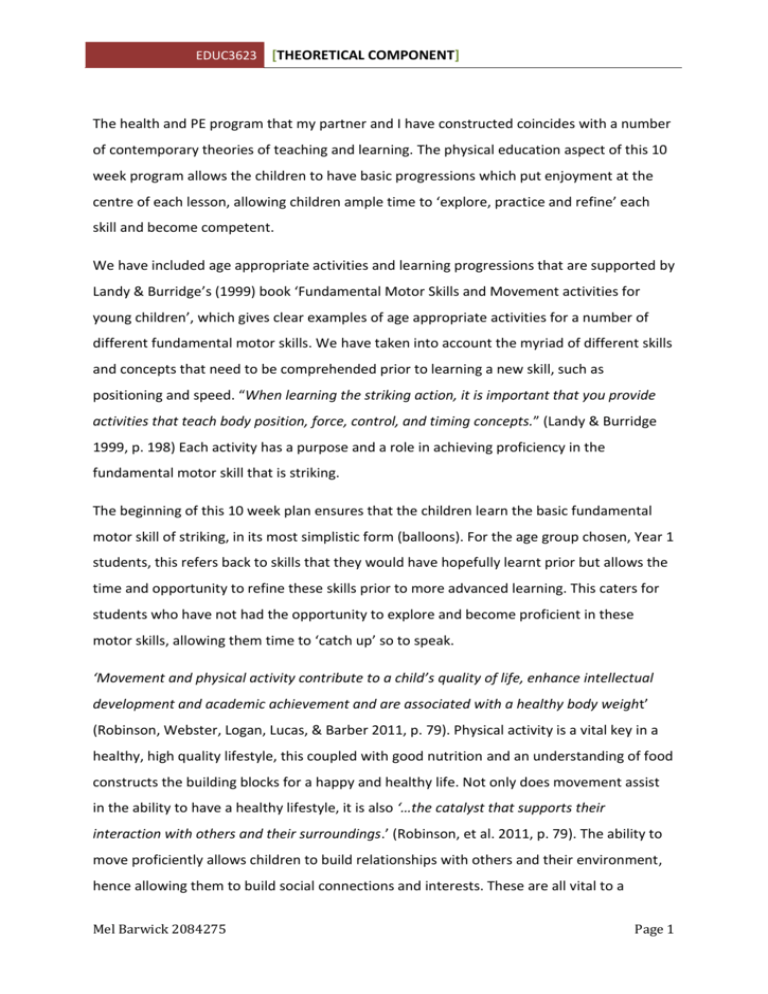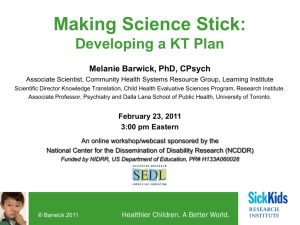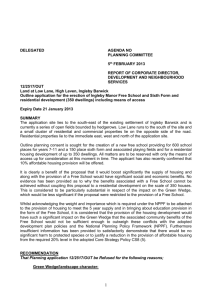Theory of Physical Development
advertisement

EDUC3623 [THEORETICAL COMPONENT] The health and PE program that my partner and I have constructed coincides with a number of contemporary theories of teaching and learning. The physical education aspect of this 10 week program allows the children to have basic progressions which put enjoyment at the centre of each lesson, allowing children ample time to ‘explore, practice and refine’ each skill and become competent. We have included age appropriate activities and learning progressions that are supported by Landy & Burridge’s (1999) book ‘Fundamental Motor Skills and Movement activities for young children’, which gives clear examples of age appropriate activities for a number of different fundamental motor skills. We have taken into account the myriad of different skills and concepts that need to be comprehended prior to learning a new skill, such as positioning and speed. “When learning the striking action, it is important that you provide activities that teach body position, force, control, and timing concepts.” (Landy & Burridge 1999, p. 198) Each activity has a purpose and a role in achieving proficiency in the fundamental motor skill that is striking. The beginning of this 10 week plan ensures that the children learn the basic fundamental motor skill of striking, in its most simplistic form (balloons). For the age group chosen, Year 1 students, this refers back to skills that they would have hopefully learnt prior but allows the time and opportunity to refine these skills prior to more advanced learning. This caters for students who have not had the opportunity to explore and become proficient in these motor skills, allowing them time to ‘catch up’ so to speak. ‘Movement and physical activity contribute to a child’s quality of life, enhance intellectual development and academic achievement and are associated with a healthy body weight’ (Robinson, Webster, Logan, Lucas, & Barber 2011, p. 79). Physical activity is a vital key in a healthy, high quality lifestyle, this coupled with good nutrition and an understanding of food constructs the building blocks for a happy and healthy life. Not only does movement assist in the ability to have a healthy lifestyle, it is also ‘…the catalyst that supports their interaction with others and their surroundings.’ (Robinson, et al. 2011, p. 79). The ability to move proficiently allows children to build relationships with others and their environment, hence allowing them to build social connections and interests. These are all vital to a Mel Barwick 2084275 Page 1 EDUC3623 [THEORETICAL COMPONENT] healthy, happy child. This is a central theme in our ten week program, where we explore relationships with the body, with food and with others in our team games. Throughout this lesson plan we have allocated a number of different opportunities for assessment, both during the informal and formal stage of learning. ‘Assessment of fundamental motor skills in the elementary school program is especially important. Children must master these skills before being sent on to more advanced movement in a middle school program’ (Olrich 2002, p. 27). Constant assessment throughout a program allows for the educator to adequately gauge a student’s proficiency in a particular skill or game. With the use of circuits and extended game opportunities the educator using this term plan will successfully be able to observe and explore each child’s learning stage and proficiency. The health aspect of this ten week program looks at the body and understanding the messages the body sends us and what our response should be. After searching for a form of literacy that would assist in the teaching of this, we have created our own story which can be altered and extended to coincide with the children’s understanding and level of comprehension. ‘Interdisciplinary learning experiences enhance and enrich what students learn’ (Cone, Werner & Cone. 2009, p. 5). By using literacy and interdisciplinary techniques to teach an understanding of the body and food allows the children to use their prior knowledge from other topics to assist in this exploration. By using recognisable colours as a basis for learning about fruits and vegetables this gives the children a foundation to connect their new learning to. We have adapted the ‘I can eat a rainbow’ program and simplified it to use the rainbow as a directional tool for learning about different fruits and vegetables. This coupled with the recognisable food triangle will build a solid basis of understanding of healthy and appropriate eating habits for the children to use in later learning. The food triangle appears throughout both primary and upper level learning and hence will be a fundamental tool in exploring healthy eating. In addition to the food triangle and ‘I can eat a rainbow’, the program 2&5 (Go for 2 and 5, 2012) has also been used as it is current and highly relevant. This program has a number of age appropriate activities available for children and teaching tools for educators. This is a fun, creative and artistic program that supports children’s learning of healthy eating whilst taking an interdisciplinary view at learning. The theoretical reasoning behind this program Mel Barwick 2084275 Page 2 EDUC3623 [THEORETICAL COMPONENT] comes from the Australian Guide to healthy Eating. The guide states that; ‘Food is not just a source of nutrients. It is important for good social and emotional health as well as physical health. Food and eating are part of the way people live their lives’(Australian Government Department of Health and Ageing. 1998, p. 1). Food is of vital importance to children as it is the fuel for their learning and wellbeing, without adequate and healthy food children will not achieve to their highest potential. This is the reasoning behind including food in our health exploration for the 10 week program. Word Count: 924 Mel Barwick 2084275 Page 3 EDUC3623 [THEORETICAL COMPONENT] Reference List Australian Government Department of Health and Ageing. (1998). The Australian Guide to Healthy Eating. Retrieved from http://www.health.gov.au/internet/main/publishing.nsf/Content/E384CFA588B74377CA256F19000 4059B/$File/fd-cons.pdf Cone, T. P., Werner, P., & Cone, S. L. (2009). Interdisciplinary Elementary Physical Education (2nd ed.). IL, USA: Author. Go For 2 and 5. (n.d.). Kids Only, Retrieved October 26, 2012, from http://gofor2and5.com.au/KidsOnly.aspx. Landy, J. & Burridge, K. (1999). Fundamental Motor skills and movement activities for young children. The centre for Applied research in Education: USA. Olrich, T. W. (2002). Assessing fundamental motor skills in the elementary school setting: Issues and Solutions. Journal of Physical Education, Recreation & Dance, 73(7), 26-28,36. Robinson, L. E., Webster, E. K., Logan, S. W., Lucas, W. A., & Barber, L. T. (2011). Teaching Practices that Promote Motor Skills in Early Childhood Settings. Early Childhood Education Journal, 40, 79-86. Mel Barwick 2084275 Page 4







